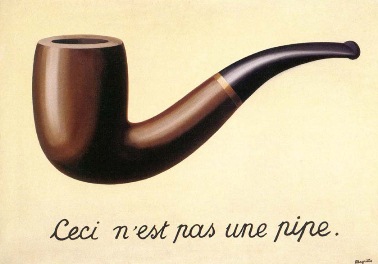At a call today on deepfakes & content labeling, this famous image from Magritte came to mind after someone showed a deepfake video with an opening disclaimer about how the events in it did not really happen:

In English, this painting is called the Treachery of Images, and the French words on it translate to “this is not a pipe.”
Wikipedia attributes this quote to Magritte about it:
The famous pipe. How people reproached me for it! And yet, could you stuff my pipe? No, it’s just a representation, is it not? So if I had written on my picture “This is a pipe”, I’d have been lying!
— René Magritte
Part of what this brings to mind for me is that, apart from real life itself, literally all media artifacts are representations. They are not the “thing itself” but a representation of the thing.
If we try to apply the IPTC categories for digitalSourceType included in C2PA standard, we might land on for Magritte’s image, perhaps:
Term ID digitalCapture Term name Original digital capture sampled from real life
But as Magritte cunningly points out, is a photo of a painting (a representation of a representation) actually “real life?” For sure, we know (well, we trust – we take it on good authority) that the original physical painting exists somewhere (the LA County Art Museum, apparently).
But where does the “real life” start and stop in this meta-situation? Is this painting a “deepfake?” (I hate that label) Is it an example of a labeling success or a failure?

Leave a Reply
You must be logged in to post a comment.